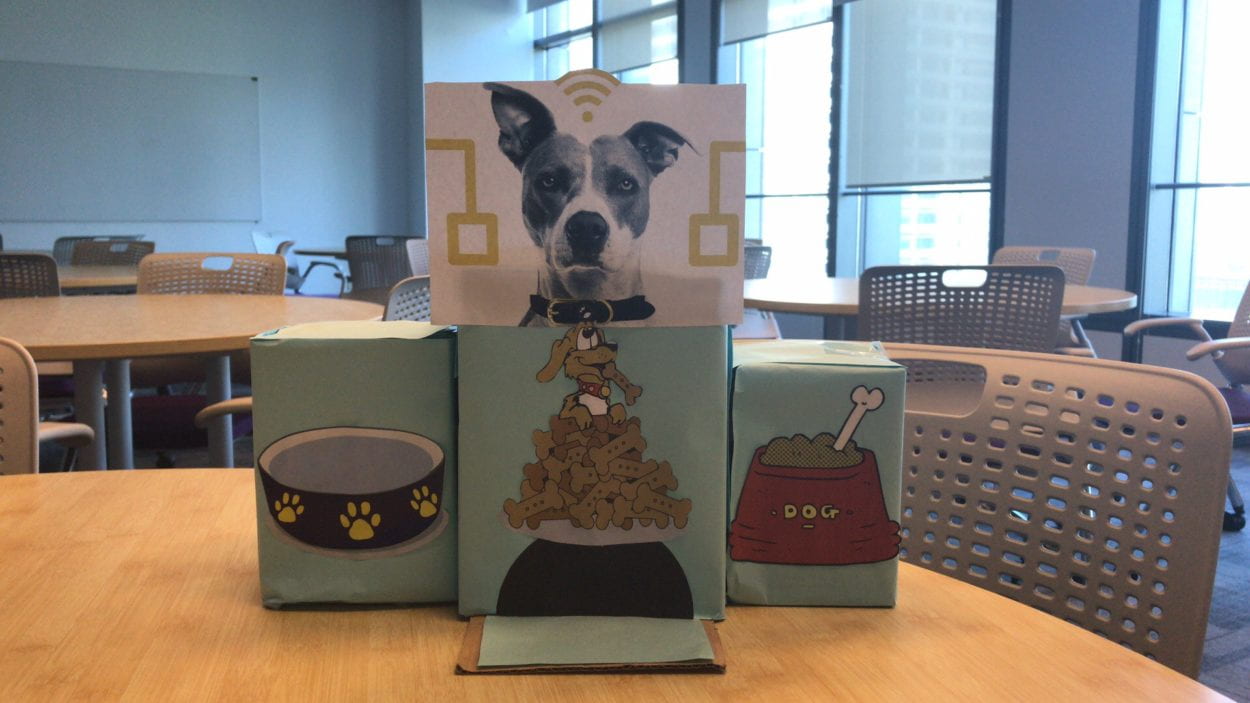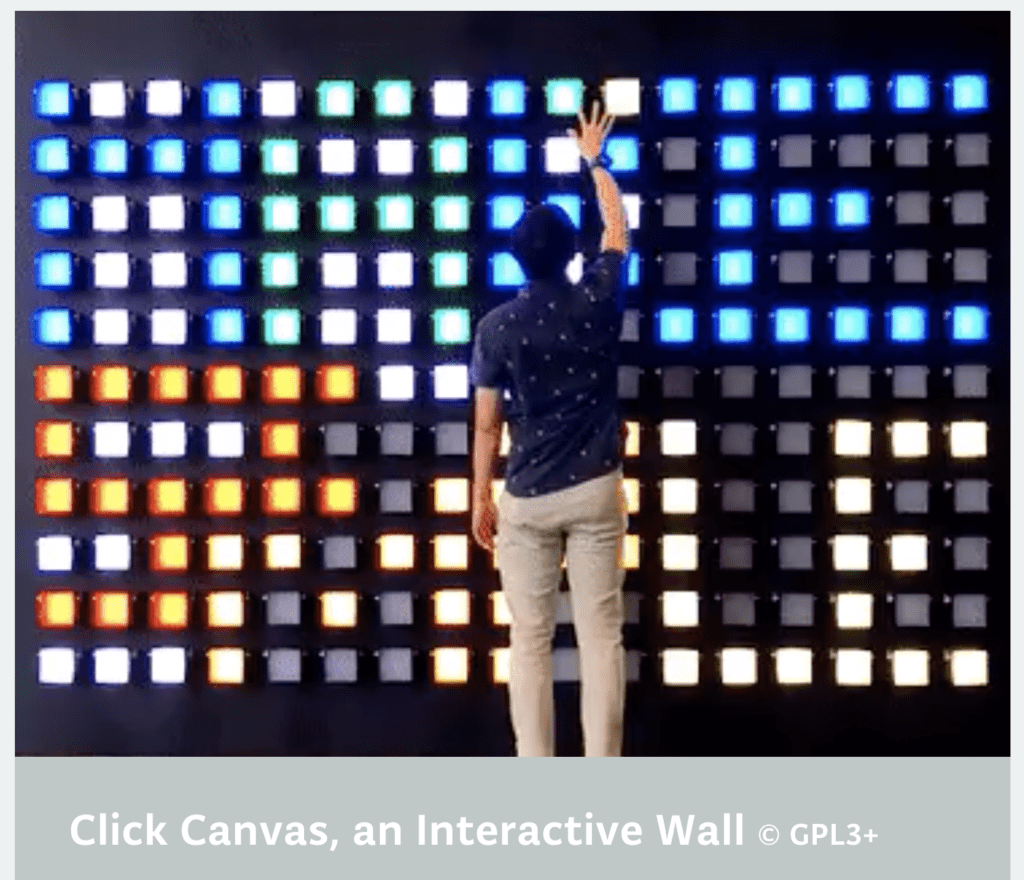Project of Interaction
Example:
Sharing Faces, done by Kyle McDonald, supported by Japanese and Korean art techs, collects photos of numerous people and analyses their facial expression, height and so on. And it designs a mirror-like screen, in front of which the user stands, and another person’s portrait appears on the screen. The other person that’s one from the photo collection will be about the same expression, height and gesture, so when the user moves in front of the screen, he will see in the mirror someone else imitating him.
Sharing Faces – Seeing yourself reflected in the image of others
Counter Example:
WiFi Impressionist, done by Richard Vijgen, is a field installation that listens for WiFi signals, builds a three dimensional model of them and draw the model on its plotter.
Def. Interaction
Interaction is the iterative progression of the action and reaction between two units.
In “The Art of Interactive Design” from week 1, interaction is defined as “a cyclic process in which two actors alternately listen, think, and speak”, and academically, “we could replace listen, think, and speak with input, process, and output” (5). Each move is a cycle, both as a reaction to the action the partner has done and as an action to which the pertner is going to react.
My definition explicitly contains the idea above. Since “iterative” implicates a chain where the last move is the base for the move now, and now is the base for the next. I also emphasize it’s action and reaction both sides, because each move should feedback the partner to make it certain changes.
Instancy Is Important
Sharing Faces the project is interactive. It’s easy to understand the progression that the mirror optically catches the player’s appearance and matches a similar other person’s photograph onto the screen is a cycle of action and reaction. It’s a bit abstract that the progression of the player is also a cycle of action and reaction, but indeed, humans can rarely resist the temptation to react to what they see, and then, the player’s changes in expression and gesture will again be captured by the mirror. So it’s an interaction between the device and the player.
This consecutive changes of both sides suggest one characteristic of a good interaction, instancy of the device’s move. It’s instancy that makes a device seem not dumb. Unless the process is nearly instant, the interaction is likely to break up since human reaction is on a whim, and before one the device is able to react, the player has lost the impulse to reflect what’s in the mind. Another reason why instancy is that the device may not exclusively get input from the player, as we read in “Intro to Physical Computing” from week 2, because an interaction artwork gets input via multiple sensors, and if the player’s move can be sensed, chances that exogenous changes are sensed should not be positively none. So the more instant, the less likely to be disturbed by irrelevant variables.
Two-directional Is a Must
WiFi Impressionist the project isn’t interactive since it turns WiFi signal input into the movement of plotting pen, but it doesn’t feedback the actor WiFi. It’s a one-directional process just receiving from WiFi, thus it’s not an interaction.
Who Should Be Interacted with: Not Human? Then Have Autonomy!
Our group project was Doglar, an intelligent multifunctional dog collar. One suggestion from a professor that struck my group members was that the collar shouldn’t depend too much on smart phones. One reason was that it would be otherwise limiting the ways of input within keyboards and screens, fingers and eyes. Another was that the actors should basically be the dog and the device, not the owner and the device, and it’s the dog’s conditions that get sensed and make the device pet the dog with autonomy.
One point of my contribution to the project was the size adjustment funtion. It senses size of the dog by stretch sensor and automatically roll the collar on a servo and fix at the optimal radius with a buckle structure.
Works Cited
“The Art of Interactive Design”, p5. http://s3-ap-southeast-1.amazonaws.com/ima-wp/wp-content/uploads/sites/3/2017/08/05164121/The-Art-of-Interactive-Design-brief.pdf
“Intro to Physical Computing”. https://drive.google.com/file/d/1uviCK0V71cQpA76PV9PK03Df14vcsd0y/view




